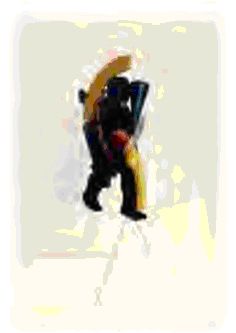Exploring the Influences of Artists Who Experience Migraine With Aura
It is only within the past 40 years that the term "migraine art" was introduced; yet artists may have been creating works inspired by migraine aura since the Stone Age. Early depictions of migraine continue to influence newer artists with this illness. This is a natural progression that is common in all types of art, according to Klaus Podoll, MD, senior physician in the department of psychiatry and psychotherapy, University Hospital Aachen, RWTH Aachen University, Germany. But Dr Podoll has found that artists with migraine are often particularly attracted to the works of other artists who share their migraine experiences. These shared experiences "act like a filter," contributing to the an artist's perspective and leading to "elective affinities between migraine-inspired artists," he said.
It is only within the past 40 years that the term "migraine art" was introduced; yet artists may have been creating works inspired by migraine aura since the Stone Age.1 Early depictions of migraine continue to influence newer artists with this illness. This is a natural progression that is common in all types of art, according to Klaus Podoll, MD, senior physician in the department of psychiatry and psychotherapy, University Hospital Aachen, RWTH Aachen University, Germany. But Dr Podoll has found that artists with migraine are often particularly attracted to the works of other artists who share their migraine experiences.2 These shared experiences "act like a filter," contributing to the an artist's perspective and leading to "elective affinities between migraine-inspired artists," he said.
In a presentation at the 14th annual International Headache Congress in Philadelphia, titled "Elective Affinities Between Migraine-Inspired Artists," Dr Podoll discussed the influence that migraine art has on other artists with migraine. "The notion of elective affinities between migraine-inspired artists relates to the idea that the passion and interest that one artist may take in the work and life of another artist may be governed or regulated by their sharing of the experience of migraine aura as artistic inspiration," he said.

Dr Podoll interviewed artists who experience migraine with aura, which serves as an inspiration for some of their artwork. These artists were asked about other works of migraine art that they have found to be of great interest and may have been an influence. Contemporary artist J. J. Ignatius Brennan discussed his interest in works by Giorgio de Chirico, who had migraine with aura. In art school, Mr Brennan's tutor pointed out that there were similarities in their work, especially in the way that shapes were put together (Figure 1). "When I first saw [the work of Giorgio de Chirico], it was love at first sight," said Mr Brennan.2

"De Chirico's migraine experiences also determined-like a filter-his perspective of reception of Friedrich Nietzsche, whose writings have previously been thought to have been the primary source of De Chirico's metaphysical art," said Dr Podoll. It has been well documented that Nietzsche had migraine. He described the effects of this on his work: "In the midst of the torments brought on by an uninterrupted 3-day headache accompanied by the laborious vomiting of phlegm, I possessed a dialectician's clarity par excellence, and I then thought out things, for which when I am in better health I am not enough of a climber, not refined, not cold enough."2
Dr Podoll is the author of numerous medical articles, book chapters, and 2 books on migraine art (Figure 2). He is also the coeditor in chief of the Migraine Aura Foundation Web site. To view additional works of migraine art, please visit this site.
References:
References
1. Podoll K, Robinson D. Migraine Art: The Migraine Experience From Within. Berkeley, CA: North Atlantic Books; 2008.
2. Podoll K. Elective affinities between migraine-inspired artists. Presented at: the International Headache Conference; September 12, 2009; Philadelphia.